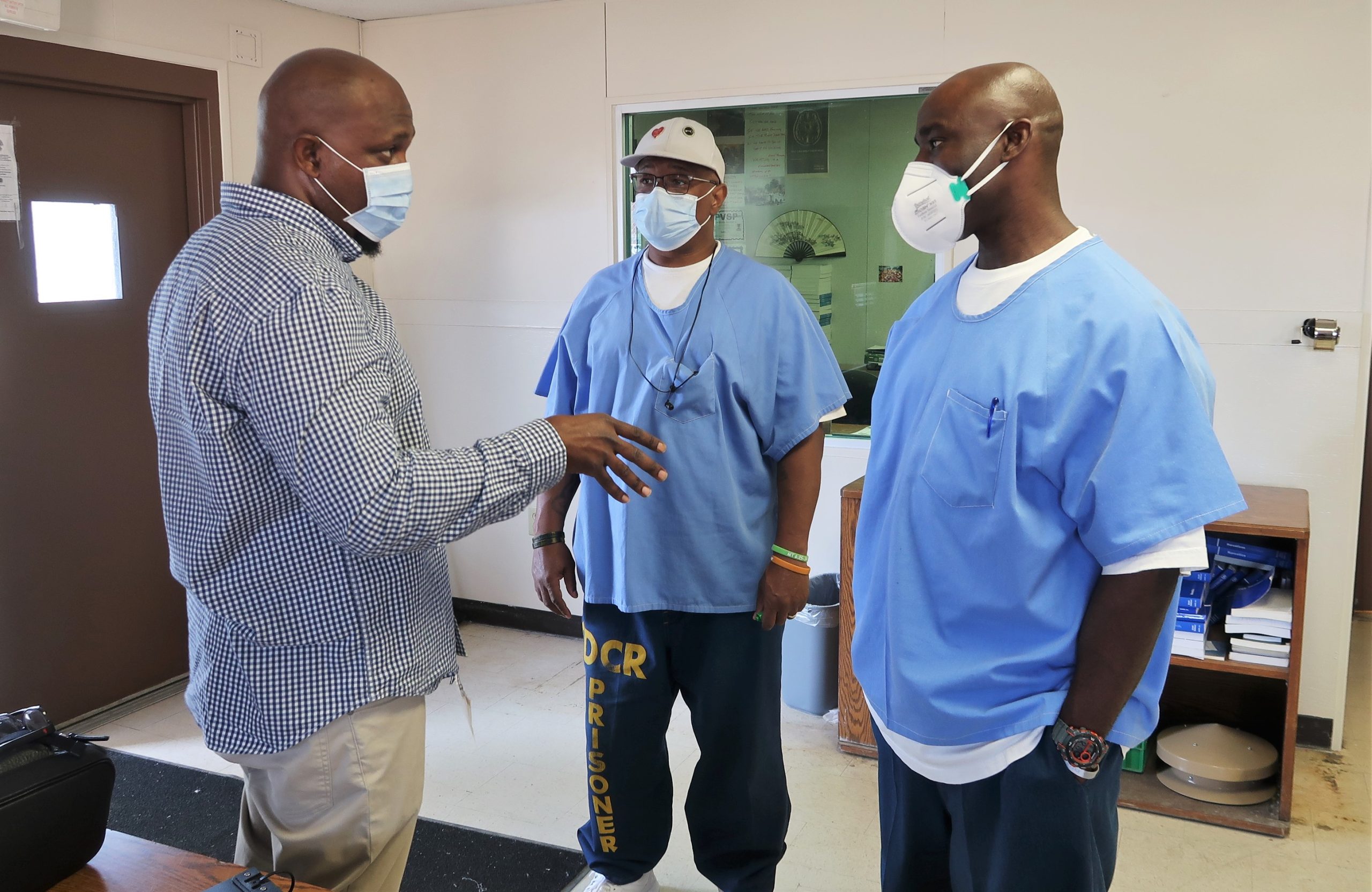(Editor’s note: In honor of National Volunteers Month, Inside CDCR takes a closer look at those who volunteer their time behind the walls at San Quentin State Prison.)
Volunteers allow San Quentin to offer 60 vital rehabilitation programs
They are college students and chefs, stay-at-home parents, retired executives and professional actors, to name just a few. Together, the volunteers at San Quentin State Prison are an astonishing 1,000 strong and growing.
These volunteers support or completely run 60 vital rehabilitative programs. The busy institution offers programming options seven days a week, day and night.
“Volunteers help out tutoring for our school and working on the San Quentin News, but we also have people running workshops, working 24/7 phone lines to help folks during the re-entry process, doing fundraising, and so much more,” said Madeline Tenney, the institution’s Community Resource Manager.
Tenney said her staff used the time during COVID-19 modified programming to reevaluate its volunteer system, streamlining and improving operations. They keep their office open six days a week, providing a comfortable place for volunteers to chat and find needed resources. Training is provided on how to navigate the prison during non-business hours, empowering them to get needed help from staff.
“We manage this large amount of volunteers by putting customer service first. So, we foster that positive relationship with them, and empower them to feel part of the team, while showing them how to make things work for all involved,” Tenney said.
California Reentry Program helps those getting out
Judith Tata, the volunteer head for nonprofit California Reentry Program (CRP), said CDCR and San Quentin have offered “unprecedented” support and collaboration, particularly since the beginning of the pandemic.
CRP’s 25 volunteers provide individual attention to incarcerated people at San Quentin who are preparing to or have reentered their community. In operation since 2003, they’re currently working with 340 men and have another 100 on their waitlist. They provide clients with clothes, job assistance and other resource help. They are there to drive the person to their transitional housing or other programs upon release and check up on them to offer support and assistance in the months afterward.
Tata is a retired marketing executive who was searching for meaning after she stopped working. She volunteered in schools, went back to school, but nothing felt right. She found her place at CRP seven years ago. When the founder retired in 2019 she took the reins.
“I woke up a little late to the reality that it was time to give back,” Tata said. “I always worked in the service industry and there was just such a need at San Quentin.”
She remembers one man who had been in and out of prison who needed a lot of support at first. Her group helped him find housing, drove him to a probation office and made sure he secured rehabilitative programming. He thrived. After his probation ended, he moved to Oregon to be with family.
“He sent me a photo of his daughter and grandchildren,” Tata said. “He said in the past no one had been there for him when he got out of prison. This time, there was care and guidance. It made all the difference.”
Marin Shakespeare fosters rehabilitation through the arts

Another long-time San Quentin volunteer keystone is Marin Shakespeare, which brings in professional actors, directors and others to help run five classes. The program is offered in 14 institutions. Not only do they put on high-caliber plays for the public, but they offer a special acting course for veterans. Participants write, rehearse and perform.
Tina Rutsch, program manager for the group’s Shakespeare for Social Justice activities, noted the healing benefits of the program. The organization takes that seriously and utilizes drama therapists in the classes. By exploring dramatic plays, the participants analyze human behavior and discuss choices, good and bad.
Sometimes, the actors might portray a character that commits violent acts that echo the incarcerated person’s own commitment history. Those lived experiences can bring unique insights into the characters they play. Rutsch said they carefully screen volunteers and discuss both the exhilaration and exhaustion that may come from the work. Volunteers are encouraged to talk about their experiences and gain support from the group.
“I didn’t plan to go into prison work,” Rutsch said with a laugh. “But I strongly believe in the transformational benefits of the arts and I want to work with people who need healing.”
By Terri Hardy, Public Information Officer II
Office of Public and Employee Communications

Read more rehabilitation stories.
Follow CDCR on YouTube, Facebook, X (formerly Twitter). Listen to the CDCR Unlocked podcast.
